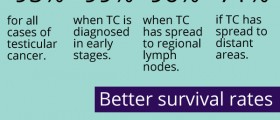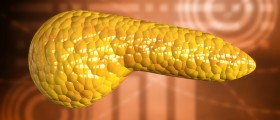Overview
Testicular microlithiasis is an uncommon condition where small deposits of calcium form in the tests and in 80 percent of cases both testicles are involved. The condition is found in around two to five percent of normal and healthy males and up to 20 percent in those who are struggling with fertility. It is an asymptomatic condition that is described as progressive in nature and the cause of which is not known.
This is usually an incidental finding made when performing an ultrasound of the testicles for some other reasons such as pain, swelling, or complaints of infertility.

Link with testicular cancer
In other studies, it was demonstrated that in healthy men with no testicular symptoms, testicular microlithiasis was more common than testicular cancer.
Risk factors for testicular cancer
The following scenarios are risk factors that may increase one's risk of developing testicular cancer:
- Abnormal development of the testicle - being diagnosed with a condition such as Klinefelter syndrome, which causes the testes to develop abnormally, may increase the chances of testicular cancer.
- Undescended testes - during the development of the fetus, the testicles usually descend from the abdominal area through the inguinal canal and into the scrotum. In some cases, one or both testicles don't descend completely into the scrotum and this increases the risk of developing testicular cancer even if the testes are surgically relocated to the scrotum. Importantly, most men who develop testicular cancer don't have a history of undescended testes.
- Patient's age - testicular cancer can develop at any age but the risk is elevated in those between 15 and 35 years of age.
- Racial group - the condition is more common in white men than in black men.
- Having a family history of the condition.
Recommendations
Men who are diagnosed with testicular microlithiasis will be followed up depending on the patient's medical history.
For example, healthy men with no testicular complaints and who have no risk factors for testicular cancer will be advised to regularly perform testicular self-exams and to consult with their physician if they notice any new or unusual lumps on the testes. No formal investigations will need to be booked in advance for these patients unless there is confirmation of an abnormal lump(s) on the testicles.
Management
There is no cure or treatment for testicular microlithiasis so the mentioned monitoring of these patients, depending on other aspects of their medical history, is important.
There has been some controversy surrounding the suggestion of performing testicular biopsies on patients with testicular microlithiasis to rule out the presence of cancer of the testes. This suggestion though has been replaced with the mentioned recommendation of monitoring the patient.
There were also suggestions that patients already diagnosed with testicular cancer and who were confirmed to have microlithiasis should receive adjuvant chemotherapy treatment but this remains unclear.
- www.ncbi.nlm.nih.gov/pubmed/17921777
- Photo courtesy of SteadyHealth
















